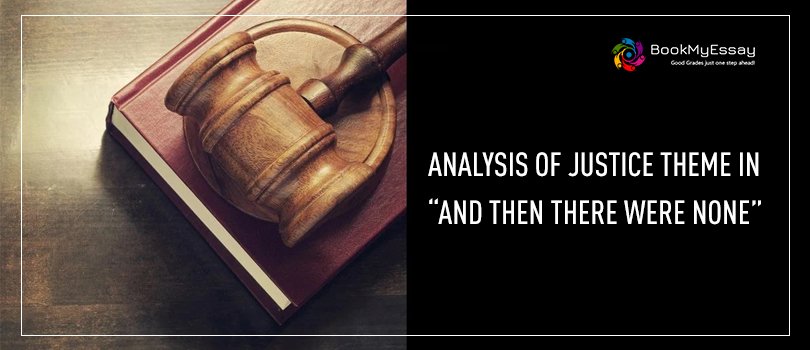Analysis of Justice Theme in “And Then There Were None”
The majority of murder mysteries review justice—its demolition, through the murder act, and its recovery, by the work of a detective that solves the crime and guarantees that the criminal pays for his or her deed. “And Then There Were None” is another masterpiece like this that explores justice, but it turns the direction by presenting the victims of murder people who did murder themselves. Thus, the successes on Indian Island are conceivably actions of justice. Judge Wargrave in this novel does all the work of murderer and detective by striking out those who are wrong and punishing them for their crimes.
The student who wants complete analysis of this English Novel can take assistance from the professional writers of BookMyEssay. With the best assignment help online, you can craft a perfect draft on any topic related to this. However, in this blog, we are going to discuss the theme of justice in “And There Where None.” Let’s get into this!
“And There Where None”: The Administration and Analysis of Justice
Whether we perceive the justice of the events on Indian Island based on both whether we perceive Wargrave’s belief that all the murder sufferers deserve their mortality and whether we admit that Wargrave has the ethical power to state and bring out the ideas.
At least some of the murders are unfair if we do not think all of Wargrave’s victims’ criminals. Emily Brent, for instance, did not murder her attendant, Beatrice Taylor. Thus, we can argue that she earns a minimal punishment for her crime.
Christie examines the path that separates those who work unjustly from those who try to reclaim justice. She recommends that wrongful behavior does not certainly make someone sick and expecting justice does not certainly make someone great.
The victims of Wargrave, although violated the laws of ethical behavior in history, are, for the majority of part, far more attractive and kind human beings than Wargrave. Although Wargrave works justice in a professional sense, he is a harsh and indifferent man, and likely violent. To know about this the students can ask for top assignment writing help from the professionals.
The Impacts of Guilt on One’s Morals
By building a story in which each character has done a crime, Christie investigates various human answers to the weight of a guilty duty. Starting with the first moments after the written voice exposes the guests’ violations; every character takes a distinctive way to deal with the guilt. There are characters who openly and boastfully dismiss their crimes are tortured by sin in secret. General Macarthur, for example, brusquely rejects the allegation that he murdered the lover of his wife.
By the subsequent day, however, sin so confuses him that he resignedly expects to die. Dr. Armstrong is fairly dismissive of the attacks upon him, but he quickly begins fantasizing about the woman who died in his operation theatre.
On the other side, the characters who keep up with their crimes are less prone to feel pains of guilt. Lombard freely agrees to leave tribesmen to rot in the African bush, declaring that he did it to preserve his own life and would gladly do it again. Tony Marston willingly holds up to moving down the two children, and he demonstrates no knowledge of having done anything evil. Neither of the two men provides a private thought-moment to his crime.
Need More Details About Themes of This Novel?
BookMyEssay is the leading academic assignment writing service Provider Company where you can meet a team of professionals best Australian writers. The helpdesk here is open 24*7 for the students. So, stop waiting and contact today.


